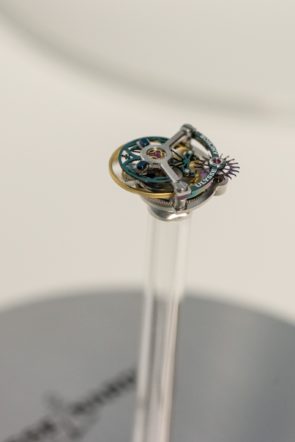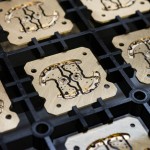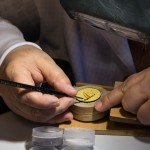
Our visit began in the La Chaux-de- Fonds factory, opened in 2004, where the brand's movements are created. Club members had the opportunity to see how the constant-force escapement works, thanks to an explanation by its creator, Stephan Von Gunten.
The R&D department focuses on the design of the movements by producing 3D drawings which are then passed on to the industrialisation departments. From the design, we move on to prototyping and then to the manufacture of the components on numerically controlled machines, and then to in-line assembly, where the movements are moved from one work station to another transported by a trolley, protected from dust. At the end of assembly, each movement is tested and rechecked both functionally and aesthetically. If it passes the tests, it is sent to the manufacture in Le Locle for case assembly. The fine-tuning of a new movement can take around two years and each calibre, following a traceability path, is constantly monitored at every stage of production to check for any problems.
In Le Locle, the historical headquarters of the Ulysse Nardin manufacture, the most sophisticated calibres are assembled in the atelier for grand complications in the traditional way: instead of the assembly line, where each watchmaker works on a section of the complete movement, here each master watchmaker takes care of all stages of calibre assembly, from A to Z.
One of the trades handed down at Ulysse Nardin that most fascinated our guests was the enamelling of dials, which they admired in the ateliers of Donzé Cadrans, a company founded in 1972 and acquired by the Le Locle-based company in 2011, while also continuing to work for other names in Swiss watchmaking. Director Claude-Eric Jan showed our members all the types of enamelling performed, all of which are grand feu: traditional white enamel, flinqué, champlevé and cloisonné.






